April 8, 2024
Commanding the Room
What is executive presence? Have you ever been in a room and someone walked in and you felt an invisible energy shift? Maybe all eyes turned one way, or a hush fell over the conversation. That’s the power of executive presence. It’s a captivating quality that inspires trust, respect, and a sense of “this person is going places.”
As leaders, we all strive to make an impact. We want to be heard, understood, and have the power to influence change. But sometimes, our brilliance can get lost in the shuffle. We deliver a well-researched presentation, only to be met with polite nods and a quick return to the previous topic. Or, we walk into a networking event, feeling our fantastic ideas get swallowed by the din of the room.


How to have executive presence? Think about it as crafting a signature melody – it’s about harnessing your unique strengths and experiences to create a powerful and lasting impression. It’s not about faking it or adopting someone else’s persona. It’s about amplifying your inner voice and becoming the most confident, compelling version of yourself.
In this blog, we’ll delve into the key executive presence skills and explore actionable strategies to cultivate this invaluable leadership skill. We’ll unpack the secrets of effective communication, powerful body language, and the art of commanding attention with authenticity. So, get ready to step out of the shadows and take center stage!
The Pillars of Executive Presence
Gravitas
Imagine a leader who, when they speak, the room falls silent, hanging on every word. This leader exudes a sense of authority and depth that commands respect. This is gravitas, the cornerstone to reaching that sense of authority of depth and respect. But how does one cultivate this elusive quality? Let’s explore the key components of gravitas.
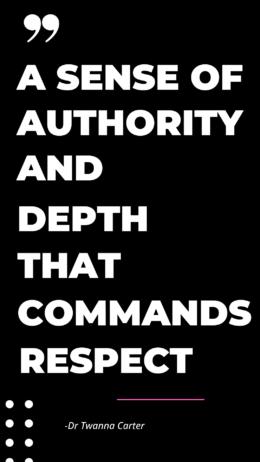

1. Confidence: Tips for Projecting Confidence
Confidence is the bedrock of gravitas. It’s not just about feeling self-assured; it’s about projecting that assurance to others. It’s about practicing assertive speaking, maintaining eye contact, and adopting a posture that screams confidence. Remember, confidence is contagious; if you believe in yourself, others will too.
2. Body Language for Confidence
Your body speaks volumes before you even say a word. Leaders know how to use their body language to reinforce their confidence. Stand tall, with shoulders back and head held high. Use open gestures to invite engagement and show that you’re in control. And when you walk into a room, do so with purpose and poise, as if you own the space.
3. Composure: Maintaining Composure Under Pressure
The true test of gravitas is how you handle pressure. It’s easy to be confident when things are going smoothly, but can you maintain that composure when faced with challenges? Take a deep breath, slow down your speech, and focus on staying present. Remember, it’s not about avoiding stress but about managing your reaction to it.
4. Decisiveness: How to Make Clear Decisions
Decisiveness is a hallmark of effective leadership. It’s about cutting through the noise and making clear, informed choices. To enhance your decisiveness, gather all necessary information, weigh your options, and then commit to your decision. Show that you’re not just a thinker but a doer.
5. Integrity & Reputation: Building Strong Moral Character
Gravitas isn’t just about how you present yourself; it’s also about who you are as a person. Leaders with executive presence have a strong moral compass and are known for their integrity. Build your reputation by consistently acting in line with your values and being transparent in your dealings.
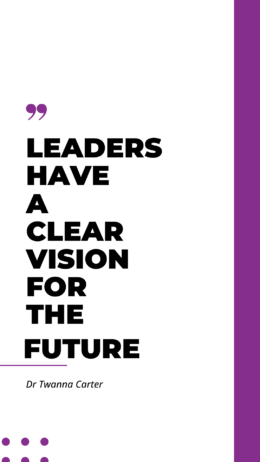

6. Emotional Intelligence: Understanding and Managing Emotions
Emotional intelligence is the ability to understand and manage your emotions and those of others. It’s about being aware of how your emotions impact your behavior and how to navigate the emotions of those around you. Practice self-reflection, empathy, and active listening to enhance your emotional intelligence.
7. Vision: Setting a Clear Direction
Leaders have a clear vision for the future. They can articulate where they’re headed and inspire others to follow. To develop your vision, think about what you want to achieve and how you plan to get there. Then, communicate that vision with conviction and clarity.
8. Charisma: Developing Your Magnetic Personality
Charisma is that magnetic quality that draws people to you. It’s a combination of warmth, authenticity, and energy. To develop your charisma, focus on being present in your interactions, showing genuine interest in others, and expressing your passion and enthusiasm.
By focusing on these key components of gravitas, you can develop the presence that will make you stand out as a leader. Remember, it is not about being someone you’re not. Rather it’s about authentically expressing the best version of yourself.
Communication
Tips for Clear and Concise Communication
Imagine you’re presenting your vision for a groundbreaking project. The room is filled with potential stakeholders, hanging on your every word. This is where effective communication comes into play. To communicate clearly and concisely, start with a strong opening that captures attention. Use simple language, and avoid jargon that might confuse your audience. Structure your message logically, and end with a compelling call to action. Remember, the goal is to convey your ideas in a way that is easily understood and memorable.
Overcome Public Speaking Anxiety
Public speaking is a common fear, but it’s a crucial skill for leaders. To overcome anxiety, start by preparing thoroughly. Know your material inside out. Practice your speech multiple times, and if possible, rehearse in the venue where you’ll be speaking. On the day of the speech, take deep breaths, and focus on the message you want to convey rather than on your nerves. Visualize success, and remember that the audience is rooting for you.
Techniques for Persuasive Speaking
Persuasive speaking is about influencing your audience to see things from your perspective. Start with a strong hook that piques interest. Use storytelling to make your argument relatable. Back up your points with data and evidence, and address potential counterarguments. Use rhetorical devices like repetition and the rule of three to make your points stick. End with a strong closing that leaves a lasting impression.
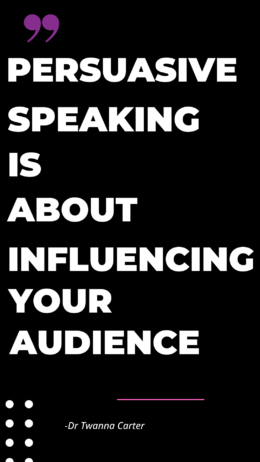

The Importance of Active Listening
Active listening is as important as speaking. It’s about fully engaging with the speaker, showing empathy, and understanding their perspective. Active listening builds trust and rapport, which are essential for effective leadership. When someone is speaking, give them your full attention. Nod and make eye contact to show that you’re engaged. Avoid interrupting, and when they finish, summarize what they’ve said to show that you’ve understood.
To improve your active listening skills, practice the following techniques:
- Paraphrasing: Repeat what the speaker has said in your own words.
- Asking open-ended questions: Encourage the speaker to elaborate.
- Reflecting feelings: Acknowledge the emotions behind the speaker’s words.
- Summarizing: Provide a brief overview of the main points discussed.
The Power of Storytelling in Leadership
Storytelling is a powerful tool in leadership. It helps you connect with your audience on an emotional level, making your message more memorable and impactful. When crafting your story, focus on relatability. Share personal experiences that resonate with your audience. Use vivid descriptions to paint a picture, and don’t shy away from showing vulnerability. A well-told story can inspire, motivate, and drive action.
To craft compelling stories, follow these tips:
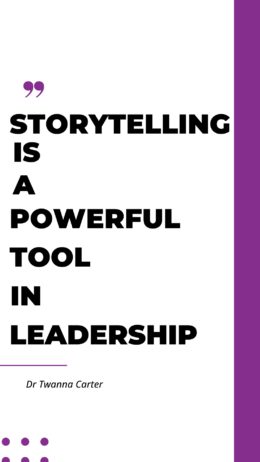

- Start with a hook that grabs attention.
- Build tension by introducing a conflict or challenge.
- Show the journey to resolution, highlighting lessons learned.
- End with a strong conclusion that ties back to your main message.
Body Language, The Nonverbal Cues for Confidence and Credibility
Confident body language is important for credibility. To project confidence, stand with your feet shoulder-width apart and use open gestures. Maintain eye contact and smile to show sincerity and friendliness. Changing your body language can help you exude confidence.When I was in my teens and twenties, I couldn’t understand why people thought it was okay to disrespect me and just walk all over me. It was because I exuded a lack of confidence by my body language. The nonverbals such as failing to meet people in the eye, head down , and my shoulders slightly hunched. None of these things indicated confidence. I learned how to change my body language to project confidence, and you can too.
Appearance
Dress for Your Industry and Position
First impressions matter, and your attire plays a crucial role in how you’re perceived. Dressing professionally for your industry and position shows respect for yourself and those you interact with. Research the dress code in your industry, and aim for a polished, put-together look. When in doubt, it’s better to be slightly overdressed than underdressed. If fashion isn’t quite your thing, then consider consulting with a stylist. They are wonderful at understanding your style and translating that into a professional look that you also feel comfortable wearing.
Importance of Personal Grooming
Grooming goes hand in hand with professional dress. Pay attention to details like hair, nails, and overall hygiene. A well-groomed appearance shows that you take yourself and your role seriously. It’s not about vanity; it’s about presenting the best version of yourself.
The Impact of Posture on Confidence
Your posture can significantly impact your confidence and how others perceive you. Stand tall with your shoulders back and chin up. Good posture not only projects confidence but also has health benefits, such as reducing back pain and improving breathing. Practice good posture in your daily life, and it will become second nature when you’re in a professional setting.
By focusing on communication and appearance, you can enhance your presence and command the room with confidence and credibility. Remember, executive presence is a combination of how you speak, how you listen, and how you present yourself. It’s about making a lasting impression that inspires trust and respect.
Other Important Skills
Developing Your Strategic Thinking Skills
Imagine you’re at the helm of a ship, navigating through uncharted waters. This is what strategic thinking feels like in the corporate world. It’s about seeing the bigger picture, anticipating challenges, and charting a course for success. To develop your strategic thinking skills, start by staying informed about industry trends and understanding your organization’s goals. Practice thinking long-term and consider the implications of your decisions. Engage in brainstorming sessions and don’t be afraid to challenge the status quo. Remember, strategic thinkers are not just focused on the destination but also on the journey.
Effective Problem-Solving Techniques
Every leader faces problems, but it’s how you solve them that sets you apart. Effective problem-solving starts with a clear understanding of the issue at hand. Break down the problem into smaller parts, and tackle each part systematically. Use a logical approach, and gather all relevant information before making a decision. Encourage diverse perspectives, as they can lead to innovative solutions. And most importantly, learn from each problem-solving experience to enhance your skills for the future.
Build Strong and Positive Relationships
Leadership is not just about leading. It’s also about connecting with others. Building strong and positive relationships is essential for a leader with executive presence. Focus on building trust by being reliable, transparent, and empathetic. Show genuine interest in others and their well-being. Invest time in getting to know your team members, colleagues, and stakeholders. Remember, strong relationships are the foundation of a successful leader.
The Art of Effective Delegation
Delegation is not about offloading work; it’s about empowering others. The art of effective delegation involves assigning the right tasks to the right people, providing clear instructions, and trusting them to deliver. It’s about recognizing the strengths of your team members and giving them opportunities to grow.
Effective delegation not only frees up your time for strategic thinking but also builds a sense of ownership and accountability among your team. Still not convinced? Just think back to the last time you worked for a micromanager. I’m willing to bet you that it was an unpleasant experience at best. Practicing delegation keeps you out of the micromanager lane.
Mentorship to Develop Others
Great leaders don’t just lead. They mentor and develop others. Mentorship is about sharing your knowledge and experience to help others grow. It involves active listening, providing constructive feedback, and encouraging continuous learning. By being a mentor, you not only help others succeed but also build a legacy of leadership.
Continuous Learning to Maintain a Growth Mindset
The journey of presence is never-ending. It requires a commitment to continuous learning and a growth mindset. Embrace new challenges as opportunities to learn and grow. Stay curious and seek out new experiences. Invest in your personal and professional development through courses, workshops, and mentorship. Remember, the most successful leaders are those who never stop learning.
By focusing on these additional skills, you can further enhance your executive presence and become a leader who not only commands the room but also leads with purpose, empathy, and vision.
Inclusiveness: Fostering a Culture of Diversity and Belonging
Inclusiveness is a crucial skill for leaders who aim to develop a strong executive presence. It involves creating an environment where diverse perspectives are valued, and everyone feels they belong. By actively promoting inclusivity, you demonstrate empathy, respect, and a commitment to equity, which are key components of effective leadership. Inclusiveness not only enhances team dynamics and innovation but also reflects positively on your ability to lead with compassion and integrity. As a leader, strive to be inclusive in your interactions, decision-making, and in building a culture that celebrates diversity.
Wrapping It UP
This is a Journey, Not a Destination
As we’ve explored throughout this blog, developing an executive presence is a journey that encompasses much more than just how you appear or communicate. It’s about cultivating a blend of confidence, strategic thinking, and genuine relationships. It’s a continuous process of self-improvement, learning, and adapting to the evolving demands of leadership.
Related: Proven Goal Setting Techniques for Black Women Professionals
Action Steps
To embark on this journey, here are some action steps you can take:
- Assess Your Current Presence: Reflect on your strengths and areas for improvement in terms of gravitas, communication, and appearance.
- Set Clear Goals: Identify specific aspects of your executive presence you want to develop and set achievable goals.
- Seek Feedback: Ask for honest feedback from peers, mentors, or coaches to gain insights into how others perceive your presence.
- Practice Mindfully: Whether it’s public speaking, active listening, or strategic thinking, practice regularly and intentionally.
- Find a Mentor: Connect with leaders who exemplify presence and learn from their experiences.
- Invest in a Executive Coach: Partner with a coach to unlock your full potential and fast-track your journey to executive presence. A coach provides personalized guidance and accountability, helping you develop the skills necessary for impactful leadership.
In conclusion, remember that developing an executive presence is a journey that requires commitment, self-awareness, and continuous learning. By focusing on the pillars of gravitas, communication, and appearance, and by embracing the additional skills discussed, you can enhance your presence and become a more impactful leader.
Related: 3 Kinds of Burnout and How to Reclaim Your Power
Share Your Thoughts and Experiences
Now that we’ve discussed the key elements of developing a presence, I’d love to hear from you. What strategies have you found effective in enhancing your presence as a leader? Are there any challenges you’ve encountered on this journey? Share your thoughts and experiences in the comments below.


I’m an ICF Professional Certified Coach (PCC) and executive coach for Twanna Carter Professional & Personal Coaching, LLC. I flubbed my first career transition from the military so badly, it took me the next 10+ years to recover. I know what it feels like to struggle with imposter syndrome and being unable to express my worth in the workplace. It’s why I am dedicated to empowering Black women. Helping them navigate change and uncertainty by providing them with the tools and strategies they need to be successful. Schedule a V.I.P. Roadmap session today.
If you enjoyed this blog, please share it with friend. If you’re feeling generous, buy me a coffee.☕️
The Executive Presence Blueprint Minicourse
Ready to Show Up Like a Leader?
If you’ve ever felt overlooked at work, despite all your talent, drive, and results, it’s not your skills that are the problem. It’s visibility. It’s presence.
That’s exactly why I created The Executive Presence Blueprint. A mini-course designed to help high-achieving women like you master the confidence, communication, and presence it takes to lead and get noticed.
In just 3 steps, you’ll learn how to:
- Project authentic confidence in every room you walk into
- Speak with clarity and authority
- Build a personal brand that gets you seen and promoted
No more playing small. No more second-guessing.
Ready to lead with confidence and be seen as the powerhouse you are? Enroll now and get instant access.
Read my latest blogs…
- 7 Signs You’re Still Leading From Survival ModeIf you’re a high-achieving Black woman executive, you’ve probably mastered the art of the juggle, leading teams, making… Read more: 7 Signs You’re Still Leading From Survival Mode
- What If Your Career Wasn’t Meant to Be This Hard?7 Thought-Shifting Prompts to Help You Discover the Work You’re Meant For You know that quiet ache that shows… Read more: What If Your Career Wasn’t Meant to Be This Hard?
- Why Boundaries Are the Richest Thing You Can Build This YearWealth Isn’t Just About Your Bank Account When you hear the word “rich,” what pops into your mind? Diamond… Read more: Why Boundaries Are the Richest Thing You Can Build This Year
- Are You Really Being Too Much, Or Just Being Seen?Have you ever felt the need to shrink yourself at work or in social spaces, just to avoid being… Read more: Are You Really Being Too Much, Or Just Being Seen?
- Career Shift? These 9 Transferable Skills Resources Are Game-ChangersAs an executive-level professional aiming for a strategic career pivot, knowing your transferable skills isn’t just beneficial, it’s essential.… Read more: Career Shift? These 9 Transferable Skills Resources Are Game-Changers
- You Need a Hustle Detox. Not Another Planner.Are you tired of buying yet another planner, hoping THIS one will finally fix your chaos? You know the… Read more: You Need a Hustle Detox. Not Another Planner.
- The 5 Core Values Every Black Woman Executive Should Define Before Her Next Career MoveHave you ever felt overwhelmed by opportunities, yet unsure which path truly fits your ambitions, identity, and well-being? If… Read more: The 5 Core Values Every Black Woman Executive Should Define Before Her Next Career Move
- How to Protect Yourself from Being Managed Out – The Ultimate Survival Playbook for Black Women ExecutivesYou walk into the Monday morning meeting, coffee in hand, feeling ready to tackle the week. But something’s… Read more: How to Protect Yourself from Being Managed Out – The Ultimate Survival Playbook for Black Women Executives
- What Your Inner Critic Is Really Costing You. And How to Take Back ControlHave you ever replayed a single mistake in your mind for days, doubted your abilities before a big meeting,… Read more: What Your Inner Critic Is Really Costing You. And How to Take Back Control
- Why Black Women Execs Doubt Their Voice (and How to Reclaim Your Power)And it starts now. If you’re ready to reclaim your voice, you don’t have to do it alone. Schedule… Read more: Why Black Women Execs Doubt Their Voice (and How to Reclaim Your Power)
- The Trauma Behind the Mask: Why I Walked Away from My Six-Figure JobI didn’t leave my job because I was unqualified. I didn’t leave because I couldn’t handle the work. They… Read more: The Trauma Behind the Mask: Why I Walked Away from My Six-Figure Job
- Stop Overgiving. Because It’s a Silent Career Killer for High-Achieving WomenYou’re smart. Capable. The one everyone counts on. From boardrooms to family rooms, you handle it all with grace.… Read more: Stop Overgiving. Because It’s a Silent Career Killer for High-Achieving Women
Curated Reads: Essential Books to Add to Your Personal Library
- Melaninated Magic: 180 Affirmations to Nurture Your Soul and Unleash Your Black Girl Joy by Twanna Carter, PhD
- “I’m Not Yelling: A Black Woman’s Guide to Navigating the Workplace (Successful Black Business Women)“, Elizabeth Leiba.
- “Crucial Conversations: Tools for Talking When Stakes Are High” by Kerry Patterson, Joseph Grenny, Ron McMillan, and Al Switzler.
- “Influence: The Psychology of Persuasion” by Robert B. Cialdini.
- “How to Win Friends and Influence People” by Dale Carnegie.
- “Lean In: Women, Work, and the Will to Lead” by Sheryl Sandberg.
- “Dare to Lead” by Brene Brown.
- “The Memo“, by Minda Harts.
- “Atomic Habits: An Easy & Proven Way to Build Good Habits & Break Bad Ones“, by James Clear
- “Worthy: How to Believe You Are Enough and Transform Your Life“, by Jamie Kern Lima
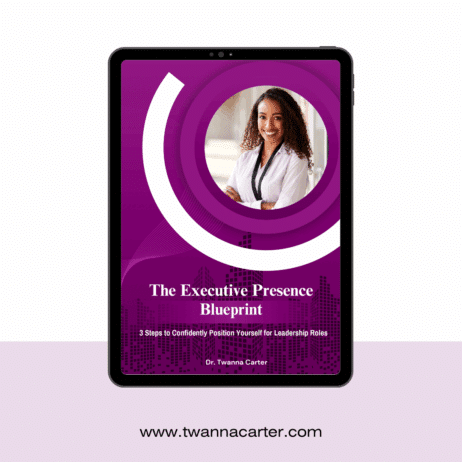





















+ show Comments
- Hide Comments
add a comment